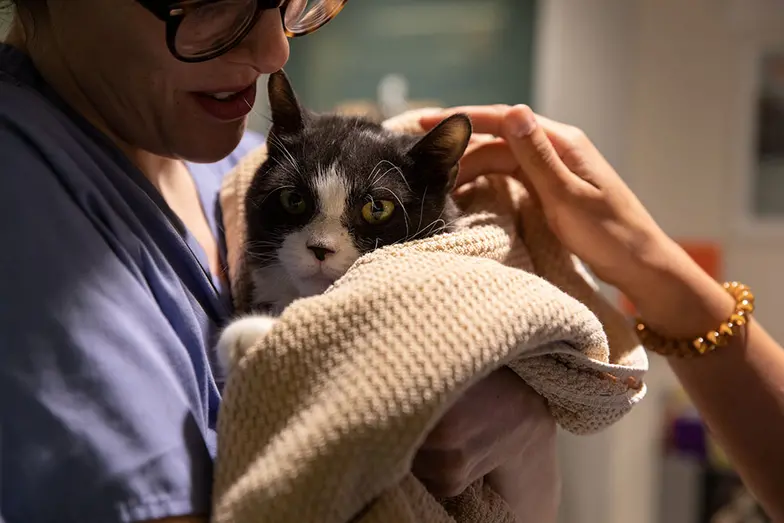Common Feline Toxic Exposures and Their Treatment

There are many common items found in the home that may pose a risk to curious cats. Due to felines’ loner nature, exposures may not be witnessed, and they can often get into spaces that owners would not have thought possible. Their unique physiology also means they may have difficulties with medications that might not cause issues for other animals.
NSAIDS
Cats are more sensitive to these medications due to their limited ability for glucuronidation.
- Ibuprofen may cause ulcers in cats above 5 mg/kg and renal concerns start at doses of 20 mg/kg and above.
- Naproxen has an even lower safety margin with renal issues at doses of 10 mg/kg.
- Chewable carprofen is a favorite and ulcers may be seen at 4 mg/kg and renal injury in cats starting at 8 mg/kg.
When exposed, cats need to be placed on GI protectants and intravenous fluids if over a renal dose.
Acetaminophen
There is a very narrow safety margin in cats. Doses over 10 mg/kg are a concern for methemoglobinemia. Cats exposed to this drug need to be monitored in a clinic for methemoglobinemia and liver values should be monitored as well. Acetylcysteine should be used in these patients.
Allium sp.
Cats’ RBC is more likely to experience oxidative damage than dogs. The dose of concern is 1 g/kg of garlic and 5 g/kg of onions. Consider emesis and one dose of activated charcoal if the exposure was recent. Monitor the RBC parameters for 5 to 7 days post ingestion. Signs associated with RBC damage include depression, pale, icteric or cyanotic mucus membranes, tachypnea, abdominal pain and pigmenturia. Treatment includes oxygen supplementation and blood transfusions in severe cases along with IV fluids to provide diuresis to protect the kidney function.
Venlafaxine (Effexor©)
This antidepressant medication is unusually attractive to cats and is a potent serotonin and noradrenaline reuptake inhibitor and a weak dopamine reuptake inhibitor. Prompt release forms will cause signs within 1 to 2 hours with the XR formulations having signs delayed up to 6-8 hours post ingestion. Cats ingesting this medication may show clinical signs for 24 to 48 hours. Treatment is the same as other SSRI drugs: emesis and activated charcoal if asymptomatic, monitor the cardiovascular system and watch for tremors and seizures. Acepromazine is the drug of choice for treatment along with cyproheptadine. Beta blockers and methocarbamol can be given as needed.
Permethrin
Cats are more sensitive to permethrin than dogs. The onset of signs from permethrin exposure may occur within minutes to hours and are most commonly seen when a canine flea medication is used on the family cat. Cats will often show moderate to severe muscle tremors, along with depression, ataxia, paw and ear flicking and seizures. Cats often hypersalivate and appear hyperesthetic. Recently exposed cats should be bathed with a liquid hand dishwashing detergent. Because hypothermia enhances the effect of pyrethrins, cats should be kept warm. Control tremors with methocarbamol (doses of 55 to 220 mg/kg IV or PO). Fluid therapy and nutritional support will be needed until signs resolve. Results with the use of intralipids are mixed, but they may be considered if standard treatment is not effective.
For assistance in treating toxin exposures in a feline patient, call ASPCA Animal Poison Control at (888) 426-4435, anytime, 24/7.
We have lots more on this subject:




